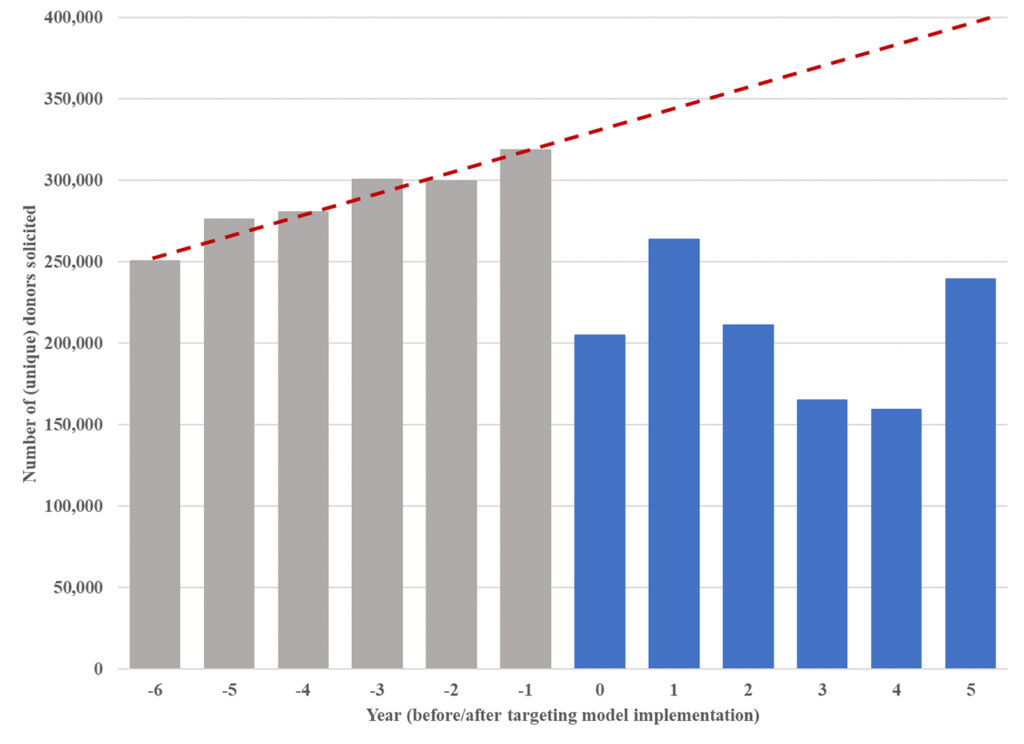Over the years, the WWF had implemented a complex segmentation scheme, mounting up to more than forty segments, some of which had cumbersome and quite unusual definitions (e.g., “Annual regular who made last donation eight to fifteen months ago.”). It was also sending many solicitations. For some segments, it could go up to thirteen or fourteen mailings per year, in addition to regular email communications.
Our analyses revealed that some donors the WWF considered the “cream of the crop” were assigned to very low-scoring classes and deemed unprofitable by our donor-potential scoring model. For instance, because the average donation amount was barely considered in the original segmentation scheme, an individual who had given $5 twice a year for the last decade was classified in one of the most valuable segments. Such individuals received thirteen newsletters and solicitation campaigns per year, which, in total, cost more than what that donor would contribute over an entire year. The most significant impact the scoring had on the Nature Foundation’s fundraising was the reduced number of solicitations, cutting in half the perimeter of some campaigns.
For the six years prior to the targeting model implementation, gross revenues had increased by 17.5% (an annual growth rate of 3.3%), while the number of solicitations had increased by 27.3% (an annual growth rate of 4.9%). Over the first six years of implementation of the endogeneity-controlling model, the gross revenues of the organization grew by +21.0% at an annual rate of 3.9%.
More significantly for the organization, while slightly accelerating the organization’s growth, and because of the much better-targeted campaigns, the total number of solicited individuals dropped significantly, as shown below. It dramatically improved the profitability of their fundraising campaigns, and freed a significant portion of their budget for more productive initiatives.








